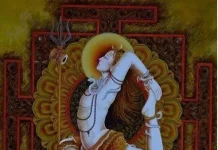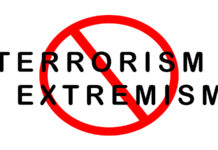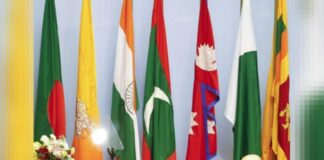A standoff between India and China that started in May 2020, eventually leading up to the deadly clashes on June 15, saw 20 and 4 (though some reports put PLA’s toll at 38-40 killed) soldiers reported dead by India and China respectively. Although disputes and standoffs have occurred between the two countries in recent years such as the Daulat Beg Oldi incident in 2013, Chumar standoff in 2014 and the Doklam standoff in 2017, none have had as much of a sustained impact on the Sino-Indian relationship as the Galwan incident. Much of it can be attributed to the fact that it is the first incident leading to death of soldiers since the Tulung La incident in 1975.
By Raj Gupta
Keeping in view the winter deployment of increased troops on both the sides, it would not be an overstatement to say that around two years after the incident, border issues that led to the Galwan incident still remain the focal point as well as a dictating factor in the Sino-Indian relationship. Notwithstanding growing trade, the political and cultural relations between the two countries have come to a standstill and remain cold till date. Amid the ongoing crisis where three areas namely Depsang, PP15 and Demchok still remain unresolved, China seems to be trying to revive high level bilateral engagements as signalled by recent visit by FM Wang Yi whereas India has stressed that the Sino-Indian relationship cannot be insulated from the border issues, and restoration of peace and tranquillity is a prerequisite for normalisation in bilateral ties.
The Galwan incident and its impact is not only guiding the manoeuvring of China’s foreign policy towards India as Beijing attempts to compartmentalize border issues away from other aspects of the relationship, but the internal propaganda to shape public consciousness has also been considerably impacted by the incident. An incident that has had such a huge impact on the relationship requires an all-round assessment including how the incident is portrayed by the Communist Party of China, what goals do the party-state wants to achieve through this messaging and how it is viewed inside China by the common people inside China.
While a lot has been written and assessed on what Beijing’s outward actions and statements imply, there are almost no assessment by the Indian strategic community on how the Galwan incident has played out inside China and what imprint has it left on the Chinese discourse, Chinese people and the nation’s collective memory.
Building of a Strong Narrative for the Party
To begin with, the incident itself was played down initially by the Chinese state media and authorities with only minuscule coverage4 of the incident in the days following the incident. There was an admission to a clash having been taken place with the onus put on the Indian side completely by the Central Military Commission, Ministry of Foreign Affairs and the state media, but the Chinese side did not reveal the numbers of how many died on their side until February 2021, just months before the CPC’s centenary, when the Central Military Commission stated that four of its soldiers were posthumously awarded for their actions in Galwan Valley. This was perhaps the first sign that the Chinese authorities were playing it strategically and a lot of thought had been given as to how to manage the incident and its memory. Perhaps China bided its time for eight months to decide upon a strategy as to how the whole Galwan episode has to be portrayed in the larger public discourse. What followed was a streak of articles and videos by the State-media that were delivered to the Chinese masses in intermittent gaps and on occasions of national importance.
On the 1st anniversary of the Galwan incident, the state media was flooded with articles disparaging India and its troops with nationalistic and passion evoking fervour that emphasized how the Chinese army suppressed the Indian soldiers and forced them to back down in a highly charged incident with stones, maces and steel rods flinging in the air. These mainstream articles set the tone of how the memory of the clash should be etched in the Chinese psyche.
On the much-celebrated occasion of the centenary of the CPC in July 2021, the Military Museum of the Chinese People’s Revolution situated in Beijing organized an exhibition named “Forging ahead under the banner of CPC- People’s Army celebrating the 100th anniversary of the founding of the CPC” in which items of the soldiers who died in Galwan were part of the main attraction which included an unfinished letter by Chen Xiangrong to his mother, Chen Hongjun’s work diary, Wang Zhuoran’s written request for battle assignment and Xiao Siyuan’s military jacket. All these four names are of the soldiers who died in the Galwan incident.
From time to time, emotionally stirring news and videos have been published related to these soldiers, and their families including videos of new recruits going to the Kangxiwa martyr’s cemetery to express their heart felt emotions in front of their tombs. State-produced documentaries on Sino-Indian border regions have witnessed an uptick. A documentary series titled “Carvings of the mountains and the rivers (山河铭刻)” was premiered on State Television on the much-awaited & celebrated occasion of the Chinese New Year showcasing various aspects of the lives of soldiers stationed in border areas including the Aksai Chin region, Pangong lake etc as well as the stories of Chinese soldiers who died in Galwan.
Following the centenary celebrations of the CPC, in a series of articles published by Chinese state media in July2021, it was highlighted how Chen Hongjun, an awardee of the July 1 Medal (the highest honour given by CPC) being a party member charged at the forefront in the face of adversaries, calling upon other party members among the soldiers to come forward and conscripts to take positions at the back. These articles highlight how the PLA fought bravely and fulfilled their duties. Since Chen Hongjun is an awardee of the July 1 Medal, it seems his role is highlighted as an example being set for what type of conduct on the military front makes up for a July 1 medal awardee. It appears that the messaging of these articles and videos mainly tries to convey two broader points, the first one being that the Communist Party of China and its members are the vanguard of the Chinese people and take the foremost responsibility for the defence of the country; and the second is that the PLA soldiers have fared well in the service of the nation and by extension, the Central Military Commission chaired by President Xi has done a good job.
Apart from these articles, interviews of border troops who are also CPC members put a strong emphasis on how being a soldier who is also a party member makes them more responsible and that they have learned leading from the front from Qi Fabao, also a CPC member and a regimental commander who was involved in the Galwan clash and suffered injuries on his head. In what was seen as a bid to politicize an international event like Olympics, he was one of the picks as a torch bearer for the Beijing Winter Olympics. It can be discerned that this not only highlighted that China was attempting to instil nationalistic feelings through the involvement of Qi Fabao, but also brought forth the importance of the Galwan narrative in broader Chinese nationalistic discourse. All of this happened when the Winter Olympics became a focal point of international politics amid the calls for its boycott by some western countries including the US. Involving Qi Fabao not only stirs up nationalism but also fulfils the goal of projecting a “heroic” party member to the Chinese public, who stood up to the challenge when China was perceivably facing danger. Perhaps what also makes him a suitable candidate for the torch bearer stint is that he has inspired many among the PLA soldiers to join the party, as reported by the state media. It was not the only time that the Olympics was plugged with military propaganda. On the occasion of the opening ceremony of the Olympics, CCTV military’s Weibo uploaded videos that show PLA soldiers playing “Mini Olympic games” on their side of the frozen Pangong lake to welcome the 2022 Beijing Winter Olympics.
After recovering from head injuries in Galwan Clash, Regimental Commander Qi Fabao was invited to a CCTV special show in which he attributed his motivation to the guidance of “Xi Jinping Thought on Strengthening the Military”, and the Karakoram spirit. It was pointed out that 2021 marks Qi Fabao’s 25 years of service to the party, again highlighting the party’s role in his military service.
Interestingly, the also host pointed out that because of soldiers like Qi Fabao, we have a “great wall of steel forged with blood and flesh” referring to the words of Xi’s July 1st Centenary speech, which drew much attention from China observers all around the world.
In Conclusion
In the two years following the incident, the dead PLA soldiers, the clash and the Galwan valley itself have been used tacitly to take considerable space in the Chinese mass’ psyche. The continued propaganda by the CPC around the Galwan incident attempts to craft a narrative that makes sure to remind the people of China that an adversary exists behind the Himalayas and on the other side of the Karakoram Plateau. But at the same time, the narrative also makes sure to let the masses know that the party is doing all it can to safeguard the borders. This has been done by carefully embedding the incident and the actors of Galwan into various occasions of national and international importance ranging from the Olympics, Chinese New Year, Gregorian New Year, Youth Day, Tomb Sweeping day and many more. The major driving force behind all of it has to be the Propaganda Department of the Central Committee of the CPC, which perhaps took its time in curating and then delivering the propaganda, most of which started pouring in after the CMC announced the names of the soldiers who died in the clash. On a closer look, it can be seen that the propaganda has been consistent, the invoking of Galwan memory on different occasions has not faded with time, as one would expect. Rather, the frequency and intensity have increased.
This article first appeared in www.vifindia.org and it belongs to them.












